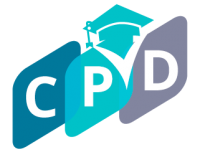Introduction:
In the digital age, technology has become an indispensable ally for students looking to optimize their studying experience. From organization and time management to collaborative learning and information retrieval, a myriad of apps and digital tools are available to support every aspect of the learning journey. In this article, we’ll explore how students can harness the power of technology to enhance studying, boost productivity, and achieve academic success.
- Organizational Apps for Effective Planning: One of the foundational elements of successful studying is effective organization. Apps like Todoist, Trello, and Asana enable students to create to-do lists, set deadlines, and organize tasks in a visually intuitive manner. These tools help in breaking down complex study schedules into manageable, actionable steps.
- Note-Taking Apps for Comprehensive Documentation: Digital note-taking apps offer a dynamic alternative to traditional notebooks. Platforms like Evernote, Microsoft OneNote, and Notion allow students to take and organize notes in various formats, including text, images, and audio. The searchability and accessibility of digital notes enhance the review process and support long-term retention.
- Mind Mapping Software for Visual Learning: Mind mapping is a powerful technique for visualizing relationships between concepts. Tools such as MindMeister, XMind, and Coggle enable students to create interactive mind maps that facilitate brainstorming, concept exploration, and the organization of ideas. Visual learning aids in understanding and enhances creativity in studying.
- Flashcard Apps for Spaced Repetition: Spaced repetition is a proven method for reinforcing learning over time. Apps like Anki, Quizlet, and Brainscape utilize spaced repetition algorithms to optimize the review process. By creating digital flashcards, students can efficiently review and memorize key concepts, promoting long-term retention.
- Time Management Apps for Efficient Studying: Efficient time management is crucial for productive studying. Apps like Forest, Focus@Will, and Pomodone employ techniques such as the Pomodoro Technique to enhance focus and prevent procrastination. These tools help students allocate dedicated study sessions, balancing focused work with strategic breaks.
- Collaborative Platforms for Group Study: Collaborative learning is enriched through digital platforms that facilitate group study sessions. Google Workspace, Microsoft Teams, and Slack allow students to collaborate on projects, share resources, and engage in discussions. These platforms promote a sense of community and collective learning, even in virtual environments.
- E-Books and Audiobooks for Flexible Learning: Embracing digital textbooks and audiobooks provides students with flexibility in their learning styles. Platforms like Kindle, Audible, and Apple Books offer a vast array of educational materials that can be accessed anytime, anywhere. Digital formats often include features such as annotations, bookmarks, and search functionalities, enhancing the reading experience.
- Language Learning Apps for Multilingual Studies: For students engaged in language studies, language learning apps like Duolingo, Babbel, and Rosetta Stone offer interactive and gamified approaches to language acquisition. These apps provide a dynamic supplement to traditional language learning methods, allowing students to practice reading, writing, listening, and speaking skills.
- Online Research Tools for Academic Exploration: Online research tools are essential for academic exploration and information retrieval. Platforms like Google Scholar, JSTOR, and Zotero aid students in accessing scholarly articles, organizing citations, and conducting in-depth research. These tools contribute to the development of well-informed and evidence-based academic work.
- Task Automation Apps for Productivity: Task automation apps simplify repetitive processes, saving time and reducing the risk of oversight. Tools like Zapier, IFTTT, and Microsoft Power Automate enable students to automate workflows, such as syncing files between platforms, receiving notifications, and organizing emails. Automation enhances productivity by streamlining routine tasks.
- Virtual Reality (VR) for Immersive Learning: Virtual reality (VR) is transforming the learning experience by providing immersive environments for exploration. VR apps like Google Expeditions and ClassVR offer virtual field trips, simulations, and interactive experiences that bring educational concepts to life. Immersive learning engages students on a deeper level and enhances understanding.
- Math and Science Tools for Problem Solving: Students in math and science fields can benefit from specialized digital tools. Wolfram Alpha, Desmos, and GeoGebra assist in solving complex mathematical problems, visualizing equations, and exploring mathematical concepts interactively. These tools serve as valuable companions for students in STEM disciplines.
- Grammar and Writing Assistance Tools: Grammar and writing assistance tools help students refine their writing skills. Grammarly, Hemingway Editor, and ProWritingAid offer real-time grammar checks, style suggestions, and readability analyses. These tools support students in crafting well-structured and polished academic writing.
- Virtual Study Groups and Tutoring Platforms: Virtual study groups and tutoring platforms provide opportunities for collaborative learning and personalized assistance. Platforms like Chegg Study, Khan Academy, and Coursera offer study materials, interactive lessons, and access to expert tutors. These platforms cater to diverse learning needs and offer additional resources for deeper understanding.
- Digital Whiteboards for Interactive Study Sessions: Digital whiteboards, such as Microsoft Whiteboard and Miro, facilitate interactive study sessions, collaborative brainstorming, and visual problem-solving. These platforms are especially valuable for group projects, allowing students to collaborate in real-time and visually organize ideas.
Conclusion:
The integration of technology into studying has opened up a world of possibilities for students seeking to enhance their learning experience. By leveraging organizational apps, note-taking tools, collaborative platforms, and specialized resources, students can tailor their study approach to align with their individual learning styles and goals. As technology continues to evolve, the landscape of educational tools will expand, providing students with even more opportunities to optimize their studying practices and achieve academic success.
